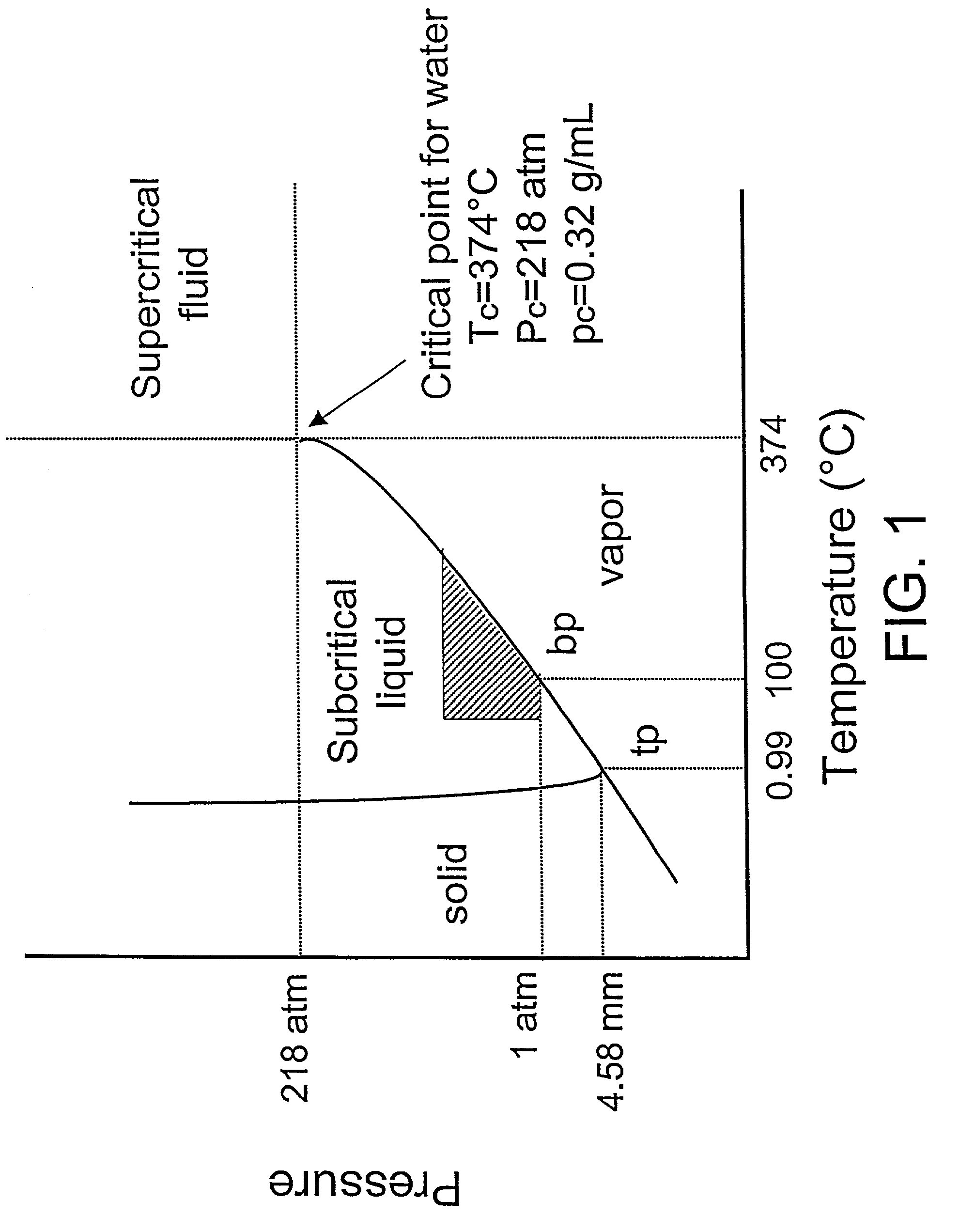Isolation of polyphenolic compounds from fruits or vegetables utilizing sub-critical water extraction
a technology of subcritical water extraction and polyphenolic compounds, which is applied in the direction of biocide, application, prosthesis, etc., can solve the problems of high cost of polyphenolic mixture isolation, quantity of raw materials, and not all readily available sources of polyphenolic compounds
- Summary
- Abstract
- Description
- Claims
- Application Information
AI Technical Summary
Benefits of technology
Problems solved by technology
Method used
Image
Examples
example 1
SWE Extraction of Anthocyanins from Dry Elderberry Stems
[0026]The extraction apparatus comprised a tubular extraction cell (46 ml) and a water heating coil enclosed within a temperature-controlled environment (oven). The apparatus was also equipped with a regulator for controlling the water pressure inside the extraction cell. Also a coil was provided for cooling the extract downstream from the extraction cell.
[0027]The sample was placed in the extraction cell and the oven was heated to a temperature of 120° C. Acidified water (0.01% HCl, pH ˜2.3) was fed at a rate of 24 mL / min at a constant pressure of 40 Bar (580 psi). Pressure was selected at a level to prevent the possibility of steam formation within the extraction cell. Incremental samples were obtained every 60–80 grams of expelled solution and collected throughout a 40-minute interval. Color was monitored visually to an approximate equivalent of 20 ppm of cyanidin-3-glucoside (a specific anthocyanin). Color bodies are not ex...
example 2
SWE Extraction of Anthocyanins from Dry Elderberry Seeds
[0031]Dry elderberry seeds were extracted using the same extraction apparatus and the same methodology as described in Example 1. A control sample was extracted with 70% ethanol and all analyses were conducted as described in Example 1. The results are reported in Table 2.
example 3
SWE Extraction of Anthocyanins from Dried Elderberries
[0032]Dried elderberries were extracted using the same extraction apparatus and the same methodology as described in Example 1. A control sample was extracted with 70% ethanol and all analyses were conducted as described in Example 1. The results are reported in Table 2.
PUM
 Login to View More
Login to View More Abstract
Description
Claims
Application Information
 Login to View More
Login to View More - R&D
- Intellectual Property
- Life Sciences
- Materials
- Tech Scout
- Unparalleled Data Quality
- Higher Quality Content
- 60% Fewer Hallucinations
Browse by: Latest US Patents, China's latest patents, Technical Efficacy Thesaurus, Application Domain, Technology Topic, Popular Technical Reports.
© 2025 PatSnap. All rights reserved.Legal|Privacy policy|Modern Slavery Act Transparency Statement|Sitemap|About US| Contact US: help@patsnap.com

